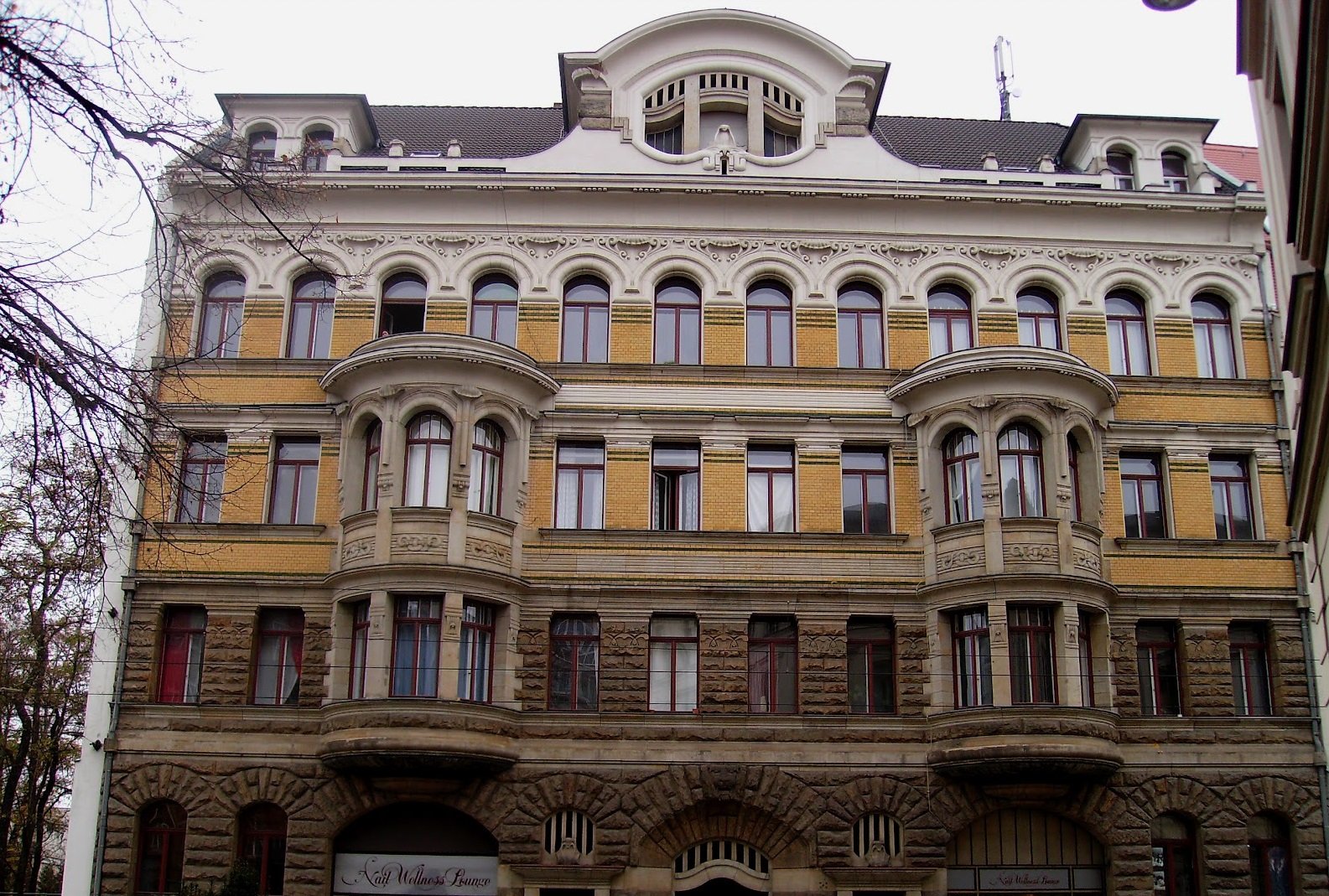#14233. Eclectic façade of a late 19th century urban mansion with Neo-Renaissance and Neo-Baroque elements

Before us stands a magnificent example of late 19th century historicism architecture, showcasing an eclectic blend of Neo-Renaissance and Neo-Baroque elements. The building façade presents a harmonious four-story composition with particular attention paid to rhythm and symmetry. The central section is crowned with a semi-circular attic featuring decorative windows, which gives the structure a majestic silhouette.
The façade is distinguished by rich articulation and thoughtful textural elaboration. Particularly expressive is the combination of yellow brickwork on the upper floors contrasted with rusticated stonework on the ground floor. The protruding bay windows with balconies on the second and third floors create a rhythmic play of light and shadow, adding dimensionality to the building. Decorative elements – stucco work, cornices, window surrounds – emphasize the façade's structure and create a sense of luxury characteristic of urban development from that period.
Notable are the semi-circular arched windows of the ground floor, contrasting with the rectangular windows of the upper floors, framed with fine casings. This technique creates a visual effect of lightening the building's mass from bottom to top. When designing a modern façade, a similar principle of contrasting treatment between the ground floor and upper levels can lend a building both elegance and solidity simultaneously.
In designing a contemporary private home, one could borrow certain elements from this façade – for instance, the rhythmic arrangement of windows, protruding elements to create volume, and contrasting combinations of materials and textures. Even on a modest scale, such techniques can give a building individuality and architectural expressiveness.